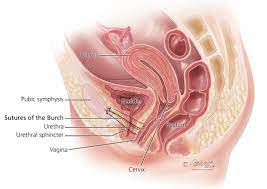What is Incontinence Treatment?
Incontinence treatment refers to medical interventions aimed at managing or curing urinary incontinence, a condition where a person loses control over their bladder.
- Non-Surgical Options: Include lifestyle changes, pelvic floor exercises, and medications to strengthen bladder function.
- Surgical Options: Address severe cases with procedures like sling surgery or artificial urinary sphincter placement.
The goal is to restore bladder control, improve quality of life, and prevent complications.
Who Needs Incontinence Treatment?
Incontinence treatment is beneficial for individuals experiencing:
- Stress Incontinence: Leakage during physical activities like coughing or sneezing.
- Urge Incontinence: Sudden, uncontrollable need to urinate.
- Overflow Incontinence: Dribbling due to an overfilled bladder.
- Mixed Incontinence: Combination of stress and urge incontinence.
- Functional Incontinence: Inability to reach the bathroom in time due to physical or cognitive impairments.
Symptoms Indicating the Need for Treatment
If you experience any of these symptoms, medical attention may be required:
- Frequent or uncontrollable urge to urinate.
- Leakage during activities such as laughing, sneezing, or exercising.
- Waking up multiple times at night to urinate (nocturia).
- Difficulty starting or stopping urination.
- Recurrent urinary tract infections (UTIs).
Types of Incontinence Treatments
1. Non-Surgical Treatments
- Behavioral Therapy: Lifestyle changes, fluid management, and bladder training.
- Pelvic Floor Therapy: Strengthens muscles with Kegel exercises or biofeedback techniques.
- Medications: Such as anticholinergics, beta-3 agonists, or topical estrogen to control symptoms.
- Pessary Devices: For women, a vaginal device supports the urethra and prevents leakage.
2. Surgical Treatments
- Midurethral Sling Surgery:
- Purpose: Treats stress incontinence by supporting the urethra.
- Procedure: A small sling is inserted under the urethra to provide support.
- Advantages: Minimally invasive and effective for long-term results.
- Artificial Urinary Sphincter (AUS):
- Purpose: Designed for severe incontinence cases.
- Procedure: A device is implanted to control urine flow manually.
- Advantages: Highly effective for patients with sphincter muscle damage.
- Bladder Neck Suspension:
- Purpose: Addresses stress incontinence by supporting the bladder neck.
- Procedure: Surgery involves lifting the bladder neck and securing it to surrounding structures.
- Advantages: Improves bladder control and reduces leakage.
Procedure Overview
For Non-Surgical Treatments:
- Preparation: Diagnosis through urodynamic tests, ultrasound, and lifestyle analysis.
- During Treatment: Medications or therapy sessions are tailored to individual needs.
- Post-Treatment: Regular follow-ups to monitor progress.
For Surgical Treatments:
- Preparation: Preoperative evaluation, imaging, and cessation of blood-thinning medications.
- During Surgery: Procedures vary but typically involve minimally invasive techniques.
- Post-Surgery: Catheterization may be required temporarily for healing.
Advanced Treatment Options
- Laser Therapy: Minimally invasive option to strengthen tissues and reduce leakage.
- Botox Injections: Relaxes overactive bladder muscles to control symptoms.
- Neuromodulation Therapy: Electrical stimulation regulates nerve signals affecting bladder control.
Post-Treatment Care
- Follow your doctor’s instructions for medications and activity restrictions.
- Stay hydrated and eat a balanced, fiber-rich diet to prevent constipation.
- Avoid heavy lifting or strenuous activities during recovery.
- Practice pelvic floor exercises as advised.
- Schedule regular follow-ups to ensure optimal recovery and results.
Why Choose India for Incontinence Treatment?
- Expertise: Highly trained urologists and specialists with global recognition.
- Technology: Availability of advanced surgical and non-surgical options.
- Affordability: World-class care at significantly lower costs compared to Western countries.
- Accessibility: Short waiting times and comprehensive patient care.
Why Choose Healtour Solutions?
- Partnerships with top hospitals and urologists in India.
- Personalized care packages, including travel, treatment, and accommodation.
- Seamless support for visas, airport transfers, and local travel.
- Transparent pricing with no hidden fees.
- 24/7 support for international patients.
Benefits of Incontinence Treatment
- Regain control over bladder function.
- Improved quality of life and confidence.
- Reduced risk of urinary infections and complications.
- Long-term relief with advanced treatments.
FAQs
1. What causes urinary incontinence?
Urinary incontinence can result from weak pelvic muscles, nerve damage, aging, or medical conditions like diabetes.
2. What are the treatment options for incontinence?
Treatment includes pelvic floor exercises, medications, lifestyle changes, and advanced procedures like sling surgery or bladder Botox.
3. How long does it take to see results from pelvic floor exercises?
Improvements may be noticed within a few weeks, but consistent practice for 3-6 months is often required.
4. Is incontinence treatment painful?
Non-surgical treatments are painless, while surgical options involve minimal discomfort, managed effectively with medication.
5. Can incontinence be cured completely?
Many cases can be effectively managed or cured with the right combination of treatments and lifestyle changes.
6. How is incontinence diagnosed?
Doctors use physical exams, bladder diaries, urine tests, and diagnostic tools like urodynamic studies or ultrasounds.
7. Are there risks associated with incontinence surgery?
Risks are minimal but may include infection, bleeding, or temporary discomfort; these are rare with modern techniques.
8. Is incontinence treatment covered by insurance?
Many insurance plans cover incontinence treatments, including surgery; consult your provider for specific coverage details.
9. Can incontinence affect my daily life?
Untreated incontinence can impact quality of life, but timely treatment helps restore confidence and independence.
10. What lifestyle changes can help manage incontinence?
Reducing caffeine, maintaining a healthy weight, regular exercise, and bladder training can significantly improve symptoms.



